Trek revamps Madone with discs, top-tube IsoSpeed
New adjustable IsoSpeed aero bikes with wild paint options




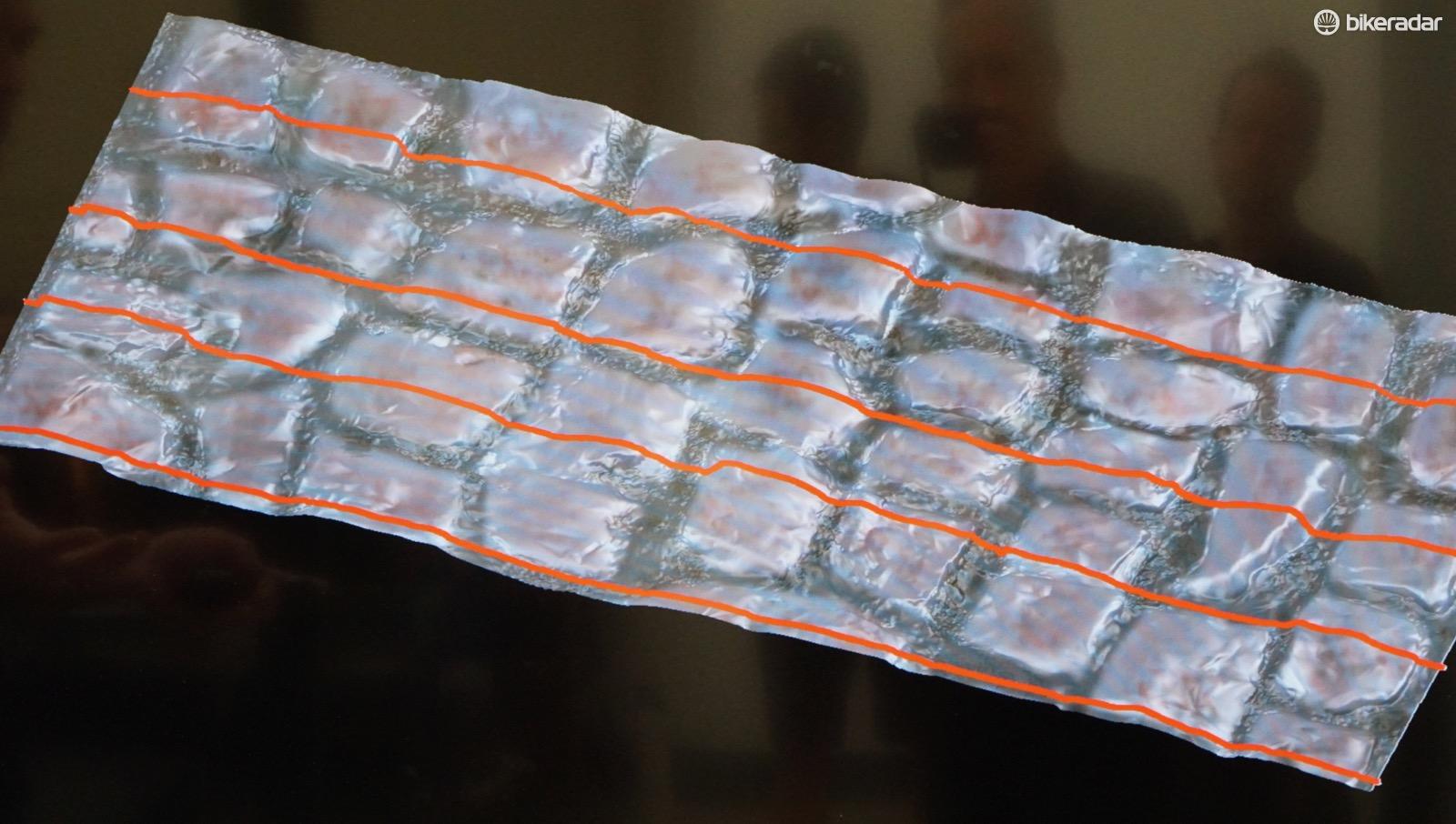














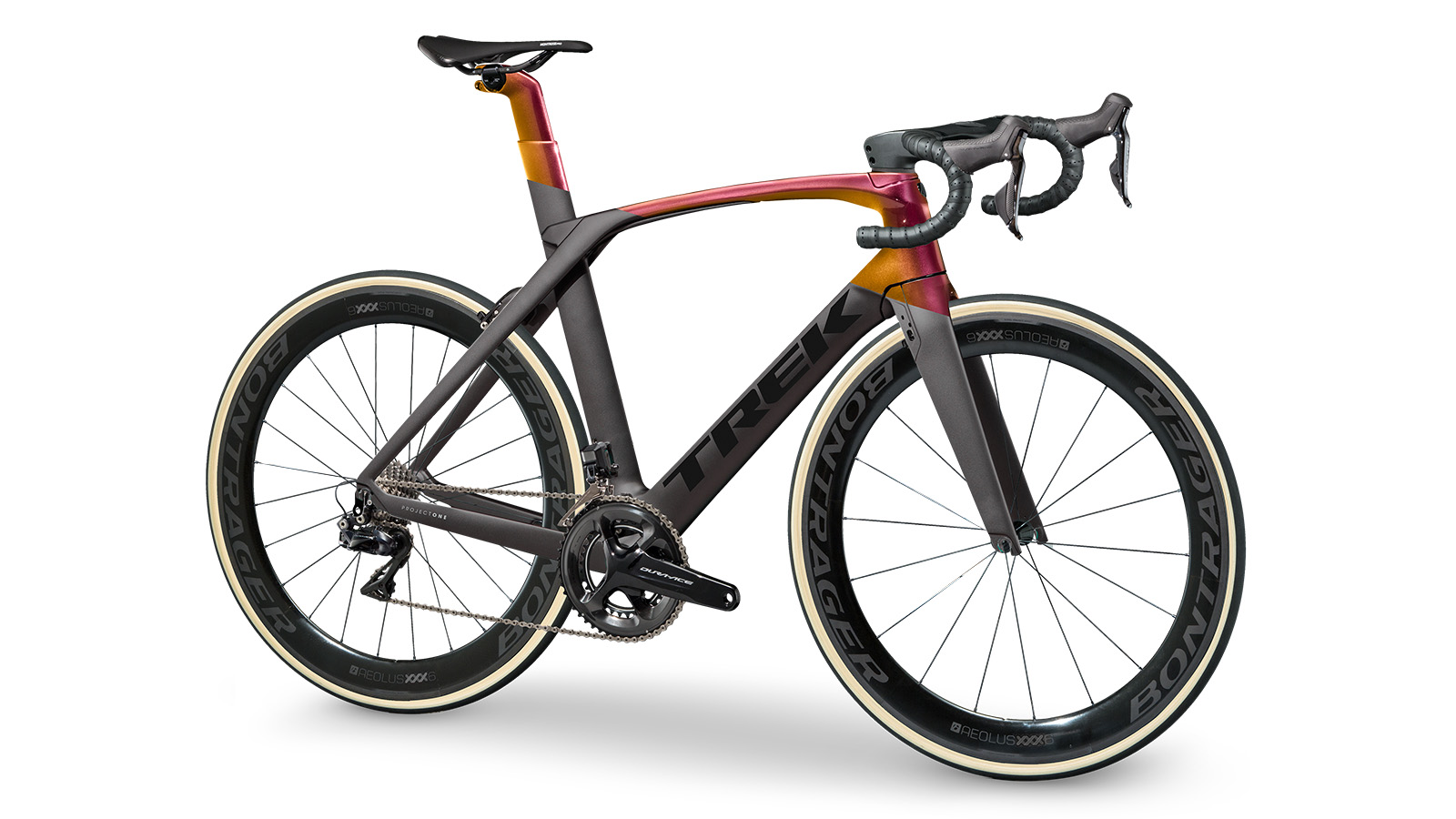



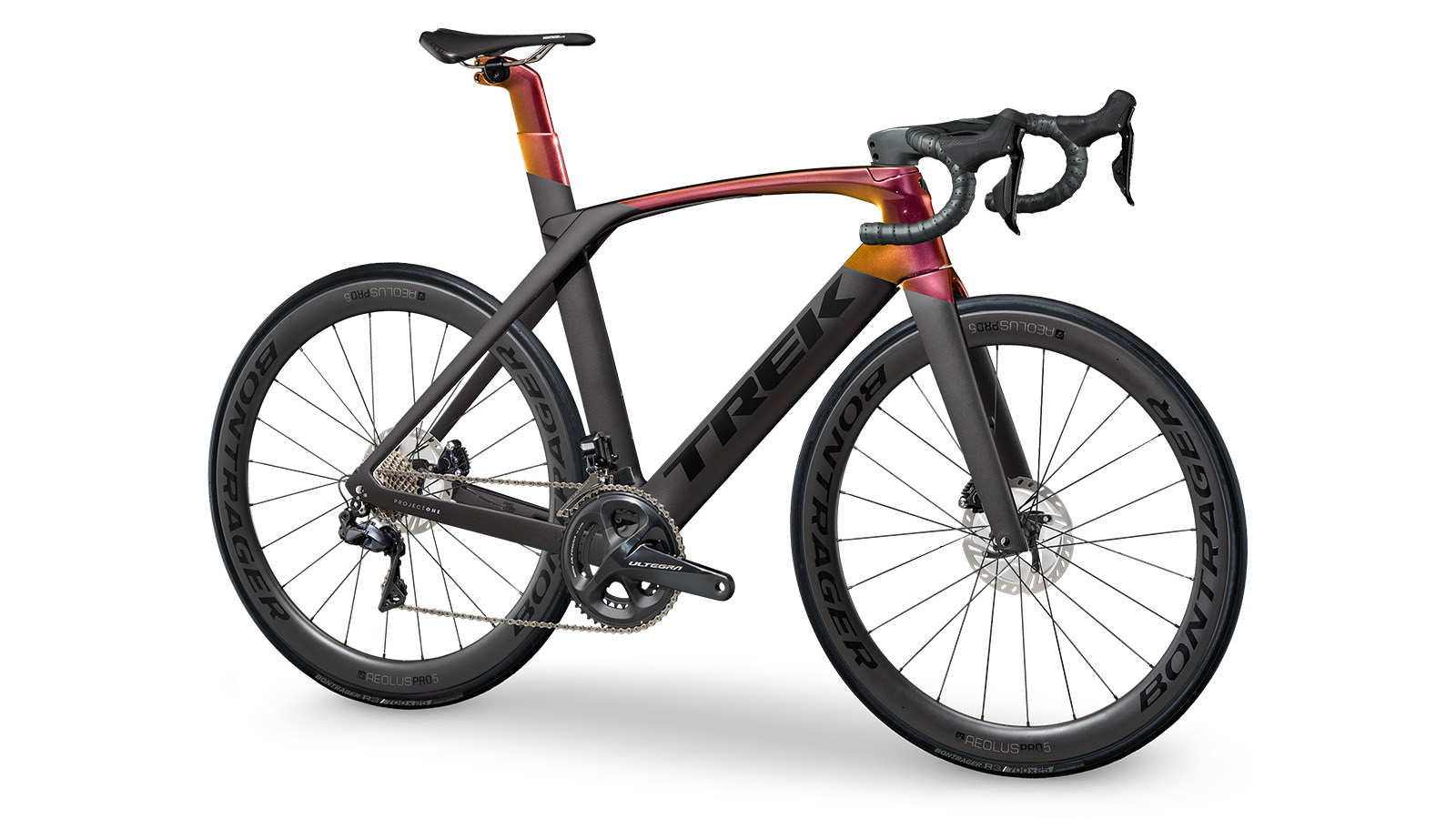
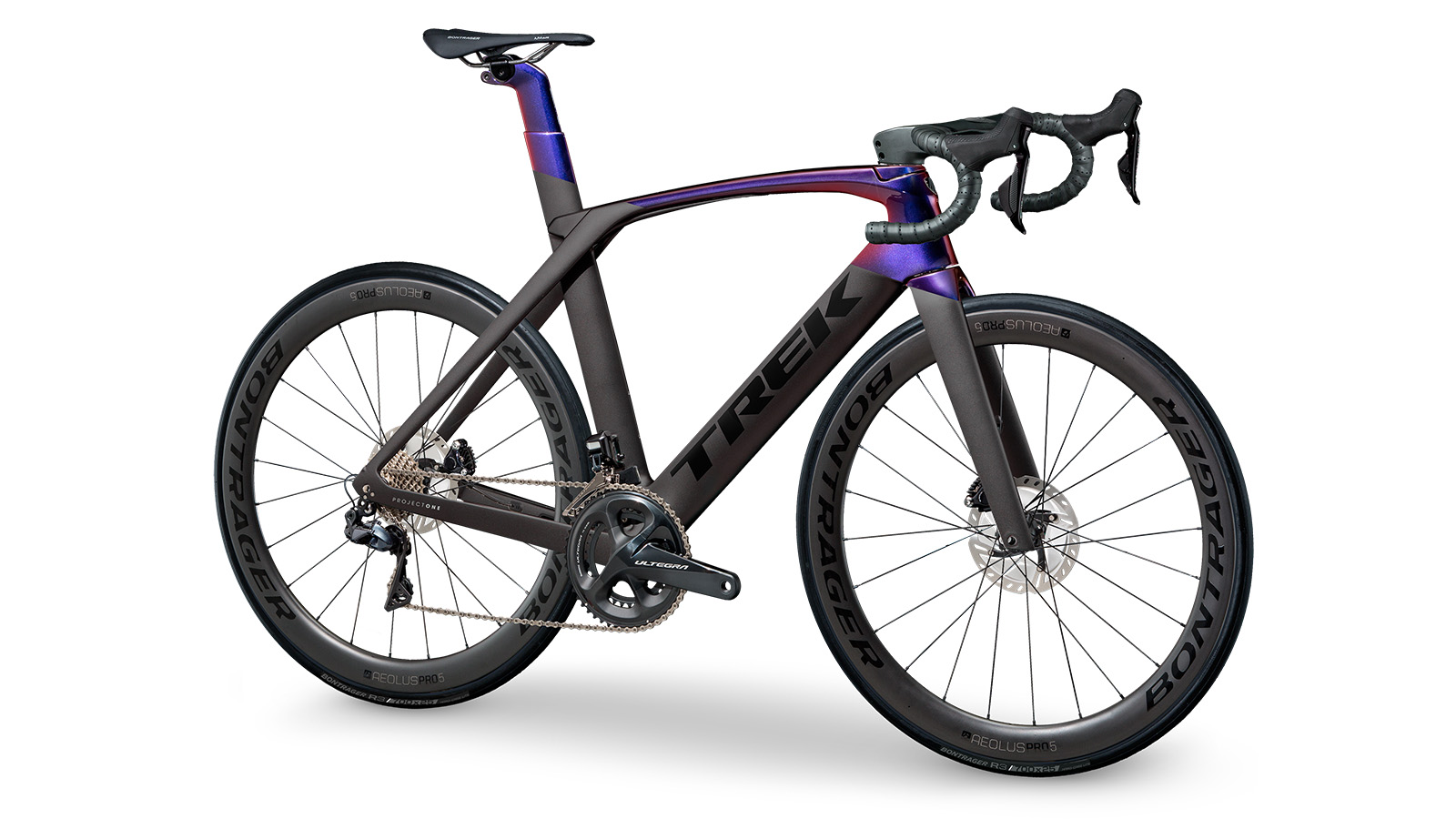


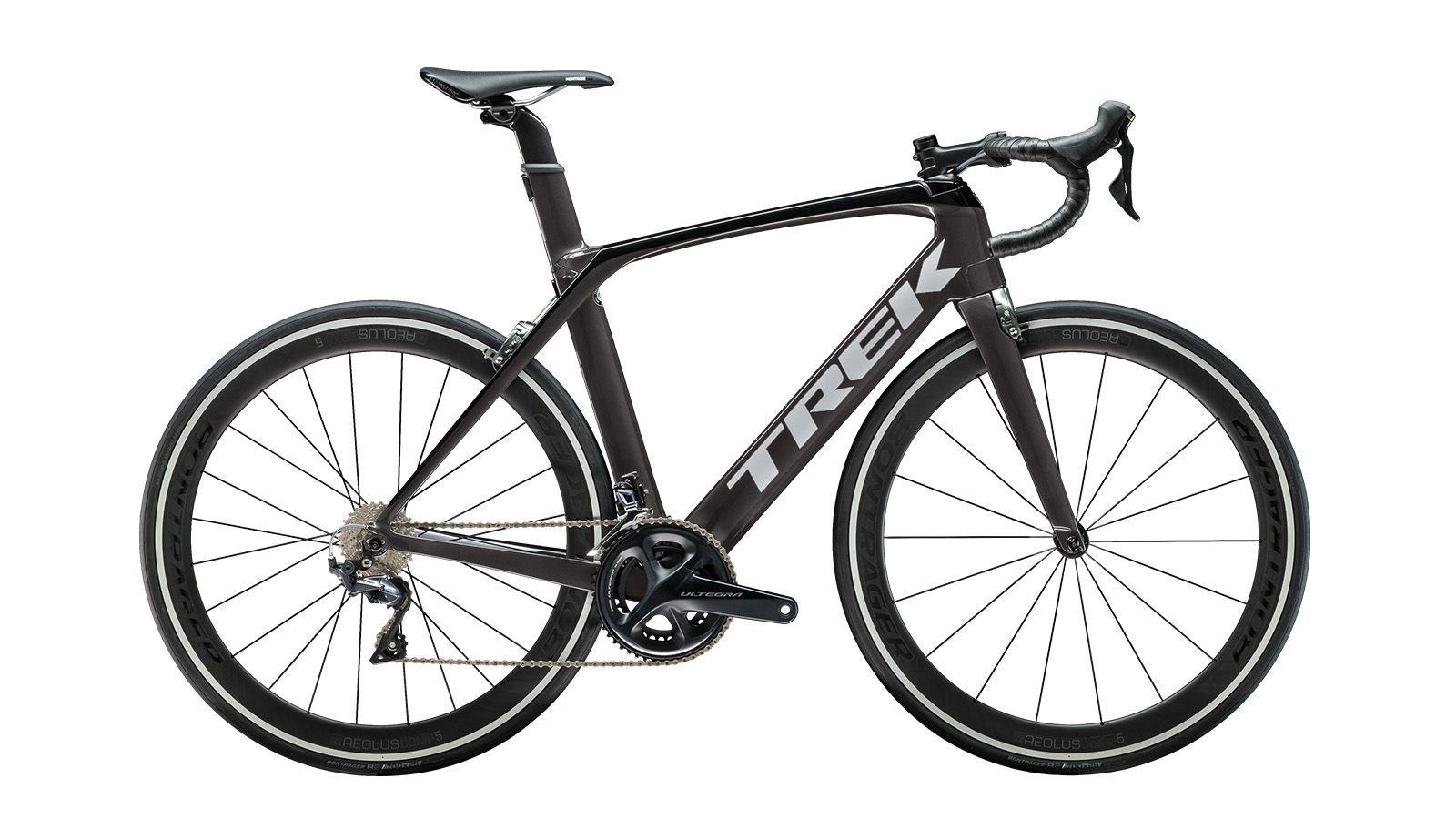





This article first appeared on BikeRadar.
Trek's latest aero bike, the Madone SLR, has disc brakes for the first time, but the bigger stories might be the revamp of an adjustable IsoSpeed in the top tube, an adjustable but still integrated bar/stem and a Goldilocks geometry that Trek calls H1.5. The Madone SLR comes in men's and women's models from an SLR 6 model at £5,499 / $5,999 to a £10,000 / $11,999 superbike with premium paint.
To create this machine, Trek deployed a motley assortment of methodologies, from the high-zoot but expected CFD and modeling work to the creation of an enormous bumpy treadmill that can replicate all manner of road surfaces. Throw in some outrageous paint options and the new Trek Madone looks to be in a class of its own.
Adjustable IsoSpeed — now under the top tube
Trek's IsoSpeed system adds significant comfort to road bikes by allowing flex in the frame around a pivot point inside the seat-tube cluster. First introduced with the Domane endurance bike and then brought to the Madone aero bike in 2015, the system has always allows for flex in both the seatmast and the seat tube.
With 'aero' and 'comfortable' having been in contradiction for so long, the 2015 Madone with IsoSpeed was a game changer.
With the new Madone, the IsoSpeed pivot remains in the same spot, but now the flex happens under the top tube, as the hockey-stick-shaped IsoSpeed member goes from the seat mast to the underside of the top tube. Further, as with the top-end Domane, the flex is adjustable, which takes the ride from 17% more compliant to 21% stiffer than the previous Madone, Trek says.

The slider (at right) controls the amount of compliance. The design is similar to the current Domane, but in the top tube instead of the down tube. Also different is the presence of an elastomer rebound damper
Get The Leadout Newsletter
The latest race content, interviews, features, reviews and expert buying guides, direct to your inbox!
One reason to move the flex to the top tube was to damp the rebound of the flex (by 13%, Trek says) thanks to a little elastomer in the seat tube. Another reason was to get similar vertical compliance numbers on all the frame sizes. (On the last Madone, smaller frames' shorter seat tubes effectively reduced the length of the spring; with top tubes there is plenty of length, even on small frames.)
To adjust the flex, you loosen a 2.5mm Allen behind the seat tube (where the elastomer sits), then loosen a 4mm bolt at the end of the IsoSpeed beam under the top tube. Then, you move a slider forward to get more flex or back to effectively shorten the flexing leaf and thus make it stiffer.

The primary deflection comes from the extension flexing upwards towards the actual top tube. The slider adjusts compliance by increasing or decreasing the amount of empty space the tube can flex into
Treadmill testing
For Trek or any brand that works with pro riders, part of the challenge of designing a race bike is translating rider feedback into quantifiable and thus actionable information. To put some numbers on what 'bumpy' means, Trek built an enormous treadmill with bolt-on bumps. It even went so far as to take a silicone mold of a section of the Arenberg Forest from Paris-Roubaix, scan it, and recreate the surface on its treadmill.
Then, by riding the treadmill on an instrumented bike, Trek engineers could measure exactly how a machine responds to a variety of surfaces, and track changes as they iterated frame designs (and tire widths and pressure and anything else they wanted to play with).
Ultimately, as the adjustable IsoSpeed shows, Trek concluded that it doesn't know exactly how you like your bike to feel, or exactly where you like to ride. But the option to have a more comfortable ride is there, right under the top tube.
Rim vs disc: lighter vs faster?
Unlike the new Specialized Venge aero bike that only comes as a disc bike, the new Madone 6 comes in rim- and disc-brake options. The rim bike is lighter, as you'd expect, but the disc bike is more aero, which is unexpected.
The Madone 6 SLR Disc with Bontrager Aeolus 6 wheels and a Shimano Dura-Ace Di2 9170 group weighs a claimed 7.4kg with an unpainted frame. The comparable rim bike weighs a claimed 7.1kg.

Madone Rim brake and Madone Disc brake
In terms of aero performance, Trek measured the disc bike as having 3,216g of drag to the rim bike's 3,221g, when testing from -12.5 to 12.5 degrees. The new rim-brake Madone, curiously, is slightly higher at 3,221g.
The increase in drag is primarily due to UCI regulations, said Trek's Tony Lemke. "We lose head tube and down tube airfoil depth," on the rim bike compared to the disc bike, Lemke said. "When we lose airfoil depth, wind separation occurs sooner since we are still at a similar section lateral width vs the disc bike. It's truncated sooner. These slight differences in depth create more drag on the tail end of the section where air separation begins to occur, especially at yaw, not so much at zero. Deeper and properly shaped sections at yaw perform better because the air has greater tendency to create laminar flow when apparent wind is from the side. The delta is little to none, but this is the theoretical answer."
The biggest change to the rim bike — aside from the IsoSpeed change — is the placement of the front brake behind the fork.
New Two-Piece Aero Bar Stem

The new Madone bar/stem has +/-5 degrees of bar rotation, compared to the past monocoque design
Another big change with the Madone 6 is the adoption of a reshaped aero handlebar that has more wrist clearance when in the drops and also +/- 5 degrees of bar rotation. The previous model was a fixed one-piece bar and stem.
The new cockpit remains highly aero in its shaping and internal routing; now riders can just adjust the bar angle.

The new bar also has more wrist clearance when in the drops
There are four stem lengths (90-130mm) and four bar widths (38-44mm). The 38mm width is new. Trek makes longer stems for its pro riders, as well.
H1 is pro geometry. H2 is more upright. The Madone 6 is H1.5
In the past, Trek offered many of its high-end bikes in two fit options — the low-head-tube H1 and the more upright H2. With the Madone 6, Trek split the difference and will only have one middleground H1.5 geometry.

The new Madone has what Trek calls the H1.5 fit - halfway between the ultra-low H1 and the more upright H2
Men’s and women’s models

The Madone disc bikes officially fit tires up to 28mm, but you can squeeze in 32mm slicks. The rim bike is designed for 25mm tires.
All the SLR bikes share the same frameset and cockpit, and vary by parts build. The only SRAM option is eTap; otherwise the bikes are various Shimano builds. Trek's house-brand Bontrager provides the everything else, from wheels and tires to saddles and handlebar tape.

| Madone SLR 8Model | USD | GBP | EUR |
| Madone SLR 9 Disc | $11,999 | £10,000 | € 11,499 |
| Madone SLR 9 Disc Premium Paint | $12,499 | £10,550 | € 12,099 |
| Madone SLR 8 | $7,499 | £6.750 | € 7,499 |
| Madone SLR 8 Premium Paint | $7,999 | £7,300 | € 8,099 |
| Madone SLR 6 Disc Women's | $5,999 | £5,400 | € 5,999 |
| Madone SLR 6 Disc Women's Premium Paint | $6,499 | £5,950 | € 6,599 |
| Madone SLR 6 Disc | $5,999 | £5,400 | € 5,999 |
| Madone SLR 6 Disc Premium Paint | $6,499 | £5,950 | € 6,599 |
| Madone SL 6 | $3,999 | £3,600 | € 3,999 |
Click or swipe through the gallery above for a closer look at the full Madone line.